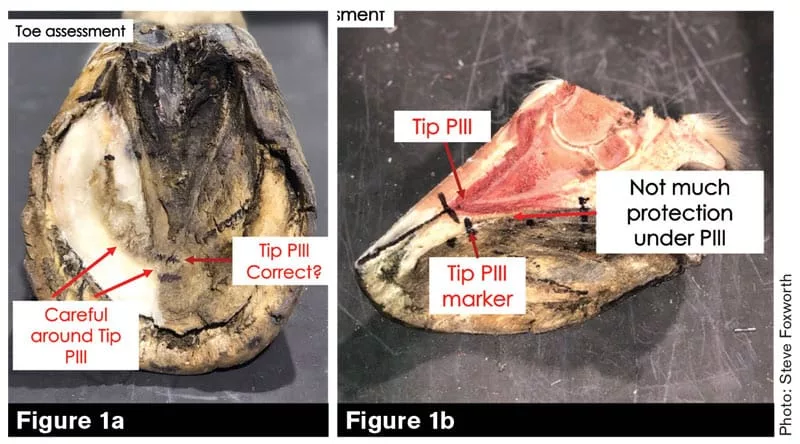Pictured Above: The ELPO Hoof Mapping Protocol indicated that the tip of the pedal bone was at the apex of the stretch frog (left), prompting questions about whether it was correct because it looked like it was too far back. Dissection of the foot (right) found that the mapping protocol was correct, but also confirmed concerns that there was little sole depth.
Farrier Takeaways
- A cadaver foot study finds that using radiographs to determine sole depth is not reliable for trimming the solar surface of the equine foot.
- In feet with a negative hoof-pastern axis, the pedal bone often rotates backward, pushing corium toward the distal end of the foot. When sole depth is trimmed to correct the angle, there is a greater chance that the corium will be cut.
- When assessing the sole of a live foot, it’s important to remember that the shortest distance between two points is a straight line. Tissue that has a curvature is longer and compressed. However, our eyes will see the exact opposite.
When evaluating the horse’s sole before trimming, there are many things we need to consider and have the presence of mind to ask ourselves some important questions — even when our tried-and-trusted methods suggest the horse has enough sole depth.
I’ve used the Equine Lameness Prevention Organization’s (ELPO) Hoof Mapping Protocol on thousands of feet, but there was one thin-soled cadaver foot that concerned me. When I mapped this foot (Figure 1a above), it indicated that the tip of…
